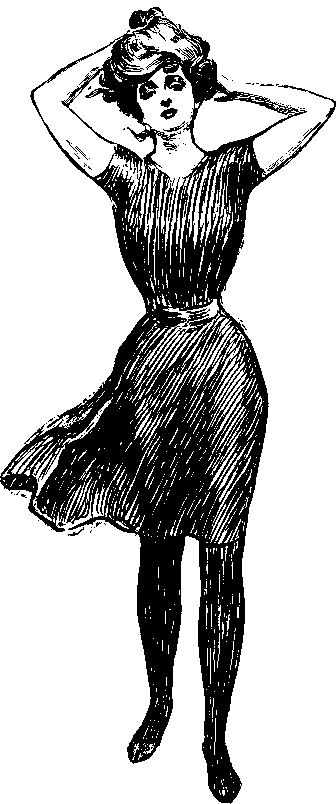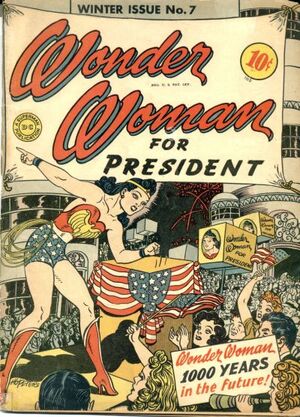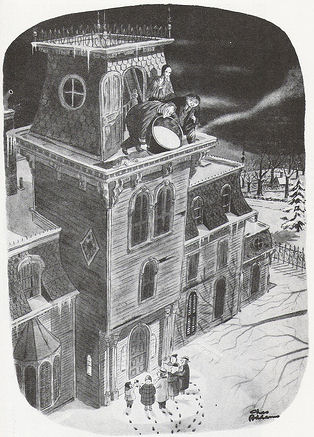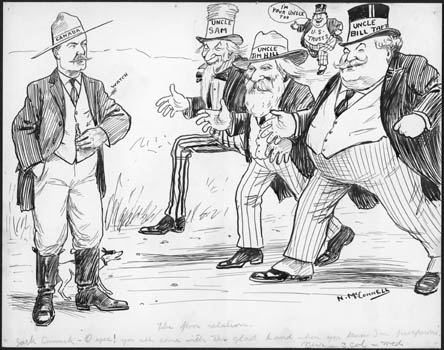This is part six of our look at comics, cartoons and language– today focusing on panel and editorial cartoons
“When I saw them together at the beach, that’s when the light bulb switched on: they were having an affair!

The origin of this metaphor– the light bulb moment– for a sudden realisation or a bright idea, I’ve been unable to pin down– but it definitely comes from comics. Note that the newspaper comic strip and the electric light bulb both came about around the same time…
However, another fine old comic strip depiction– that of sawing wood to indicate snoring:

…existed for many years in the language prior to its use in cartooning.
************************************************************
Edith Nesbit? The one featured in ‘Ragtime’, the Gibson Girl whose husband murdered Stanford White?
The Gibson Girl was the personification of a feminine ideal as portrayed in the satirical illustrations and cartoons created by Charles Dana Gibson (1867– 1944) during the two decades following her creation in 1890.

The Pin-Up, art by Charles Dana Gibson
“I’ll tell you how I got what you have called the ‘Gibson Girl.’ I saw her on the streets, I saw her at the theatres, I saw her in the churches. I saw her everywhere and doing everything. I saw her idling on Fifth Avenue and at work behind the counters of the stores…[T]he nation made the type. What Zangwill calls the ‘Melting Pot of Races’ has resulted in a certain character; why should it not also have turned out a certain type of face?…There isn’t any ‘Gibson Girl,’ but there are many thousands of American girls, and for that let us all thank God.”
“They are beyond question the loveliest of all their sex…In the United States, of course, where natural selection has been going on, as elsewhere, and where, much more than elsewhere, that has been a great variety to choose from. The eventual American woman will be even more beautiful than the woman of to-day. Her claims to that distinction will result from a fine combination of the best points of all those many races which have helped to make our population.” — Charles Dana Gibson
“They are beyond question the loveliest of all their sex…In the United States, of course, where natural selection has been going on, as elsewhere, and where, much more than elsewhere, that has been a great variety to choose from. The eventual American woman will be even more beautiful than the woman of to-day. Her claims to that distinction will result from a fine combination of the best points of all those many races which have helped to make our population.” — Charles Dana Gibson
The Gibson Girl was a new type of American beauty, representing a new type of American woman: tall, confident, classless and strong– as depicted in the above cartoon by Gibson, entitled ‘The Weaker Sex’. (That’s a man under the magnifying glass.)
We can see who the bosses are in the cartoon below:
Please click on image to enlarge
Note that one of Gibson’s many imitators included Harry G Peter (1880– 1958), who would go on to create that other icon of strong women, Wonder Woman.
Could the latter be the last incarnation of the Gibson Girl?

Art by Harry G. Peter
For nigh on twenty years, many tens of thousands young American women styled themselves after the Gibson Girl; her reign faded away after World War I, and the coming of a new feminine type — the boyish, dizzy, hedonistic ‘flapper’, as depicted below:

Art by John Held
The USAAF World War II-era SCR-578 (and the similar post-war AN/CRT-3) survival radio transmitters carried by aircraft on over-water operations were given the nickname “Gibson Girl” because of their “hourglass” shape:
**************************************************************
“It’s not a tax per se, it’s a revenue enhancement–” “I say it’s spinach and I say the hell with it!“
This rejoinder comes from a famous New Yorker cartoon of 1928– picture by Carl Rose (1903–1971), caption by E.B.White (1899-1985):

Useful for when weasel words are bandied about!
Another New Yorker cartoon, by Peter Arno (1904-1968), has a caption that has passed into everyday speech:

…quoted whenever an undertaking fails, and we have to go back to the beginning.
*************************************************************
“He lives in a spooky old Charles Addams Victorian house.“

Charles Addams (1912–1988) was a New Yorker cartoonist famous for the comical creepiness of his world. His name is now associated with a Gothic, black comedy sensibility.

Addams’s recurring cast of characters — the ‘Addams Family’ — were not individually named until the television series of that title. The giant, speechless butler Lurch (far right in the above cartoon) became a derisory nickname for men of exceptional height.
***************************************************************
Another New Yorker cartoon, this one from 1993, has a caption that’s become almost proverbial:
Art by Peter Steiner
Indeed, we’ve all known how the Internet allows one to adopt “sock puppet” pseudo-identities.
I assure you, though, you can trust the (woof!) writer of these lines (rruff!)
*************************************************************
“Paleontologists disagree as to whether a stegasaurus’ thagomizer was for defense or display.”

“Now this end is called the thagomiser…after the late Thag Simmons.”
Here’s a 1982 coinage by Gary Larson (1950- ). In the above cartoon, he dubbed the spiked tail-end of a dinosaur a thagomiser; the word has since been adopted informally by paleontologists.
**************************************************************
“It’s a rough neighborhood– you have to constantly project a don’t-tread-on-me vibe.”
The United States has, of course, a long tradition of editorial cartoons– in fact, Founding Father Benjamin Franklin (1706-1790) is credited with being the country’s first cartoonist.
Art by Benjamin Franklin
To update his famous epitaph:
” He stole the lightning from the heavens, and the scepter from the tyrants– but best of all, he drew cartoons!”
Franklin was much enamoured of the rattlesnake as a symbol of America:
“I recollected that her eye excelled in brightness, that of any other animal, and that she has no eye-lids—She may therefore be esteemed an emblem of vigilance.—She never begins an attack, nor, when once engaged, ever surrenders: She is therefore an emblem of magnanimity and true courage.—As if anxious to prevent all pretensions of quarreling with her, the weapons with which nature has furnished her, she conceals in the roof of her mouth, so that, to those who are unacquainted with her, she appears to be a most defenseless animal; and even when those weapons are shewn and extended for her defense, they appear weak and contemptible; but their wounds however small, are decisive and fatal:—Conscious of this, she never wounds till she has generously given notice, even to her enemy, and cautioned him against the danger of stepping on her.—Was I wrong, Sir, in thinking this a strong picture of the temper and conduct of America?”
Many other Americans– including fellow patriot and cartoonist Paul Revere, who depicted the American rattlesnake fighting the British dragon– agreed with him.
This is most tellingly shown by the Gadsden Flag, first adopted by Philadelphia’s marines in 1775, then by militias and, ultimately, the United States Navy:

The motto “Don’t tread on me” continues to this day to be a strong warning to back off, or else. It has been revived in the political arena by Tea Party demonstrators, as a caution to the Federal government to respect the rights of the individual.
**************************************************************
‘He was very knowledgeable about how the two parties are destroying our political process. One of the interesting things that Dean pointed out was the way they’ve used redistricting, or gerrymandering, to eliminate competition.” —Jesse Ventura, Don’t start the Revolution without me
The word gerrymander was first used in the Boston Gazette newspaper in 1812, in reaction to a redrawing of Massachusetts state senate election districts by governor Elbridge Gerry.
The latter had signed a bill that redistricted Massachusetts to benefit his Democratic-Republican Party. When mapped, one of the contorted districts in the Boston area was said to resemble the shape of a salamander. Gerry + salamander = gerrymander. (Oddly, Gerry’s name was pronounced with a hard “g”, while the term he spawned takes a soft one)
Appearing with the term was a political cartoon, most likely drawn by Elkanah Tisdale, depicting a strange animal satirising the map of the odd-shaped district:
Gerrymandering is now used to describe all cases of district-shape manipulation for partisan gain.
(Alas, the practice is not restricted to the U.S.A; in France it’s known as le charcutage electoral, literally ‘electoral butchering’.)
**************************************************************
Here crash`d a sturdy oath of stout John Bull,
Who damn`d away his eyes as heretofore:
There Paddy brogued, `By Jasus!` — `What`s your wull?`
The temperate Scot exclaim`d: the French ghost swore
In certain terms I shan`t translate in full,
As the first coachman will; and `midst the roar,
The voice of Jonathan was heard to express,
`Our president is going to war, I guess.`
–George Gordon, Lord Byron, The Vision of Judgement (1821)
The above quote illustrates a historically forgotten idiom: Jonathan was the nickname for an American, from the War of Independance through roughly the middle of the nineteenth century.
It derives from the cartoon figure known as Brother Jonathan, a symbol of American patriotism whose origins are obscure:

Art by Thomas Nast
However, Brother Jonathan was dethroned by a younger symbol, one who is very much with us yet: Uncle Sam.
In the year 1812, a large quantity of provisions for the army was purchased at Troy, N.Y., and inspected by one Samuel Wilson, known as “Uncle Sam.” The packages were marked U.S. On being asked the meaning of these initials, a workman jokingly replied that he didn’t know unless they meant Uncle Sam.
The name caught on, and soon Uncle Sam was appearing in cartoons, as a symbol of the Federal government, and then of the U.S.A. in general.
His appearance as we know it now wasn’t fixed for a long time; in the 1860 cartoon below, Sam is the man on the right:

The familiar accoutrements– the flag-based clothes, the stovepipe hat, the goatee– began to appear in the 1870s, as in this British cartoon:
(Note that Sam is referred to here as ‘your cousin Jonathan’.)
Of course, the final refinement of Uncle Sam’s image came not from a cartoon, but Montgomery Flagg’ s famous World War I recruitment poster:
*************************************************************
Looks Like John Q. Public May Not Have Picked A Swell Time To Jump Into Stocks, Dump Bonds — headline, Forbes magazine, 23 December 2010
The symbol of the average American, John Q. Public debuted in 1922, in the Chicago Daily News, a creation of cartoonist Vaughn Shoemaker (1902 — 1991):

He was originally meant to represent the ordinary citizen oppressed by taxation, but soon expanded his role to that of everyman, a stand-in for the concerned and bemused reader. Other cartoonists quickly adopted him, as did prose commentators. John’s female equivalent is Jane Q. Public.
To this day, nobody knows what the ‘Q’ stands for.
***************************************************************
“In the 2010 mid-term congressional elections, the elephants stomped roughshod over the donkeys.”
If the Republican Party is symbolised by an elephant, and the Democratic Party by a donkey, it is due to the imagination of one man, perhaps America’s greatest political cartoonist: Thomas Nast (1840 – 1902)
He first deployed these symbols in a cartoon in Harper’s Weekly, on November 7, 1874:
Down to this day, cartoonists have used the beasts to represent the two parties — which have embraced these somewhat silly symbols, despite their often undignified treatment in the press:

*************************************************************
“He got a cushy job in the Sanitation Department through his uncle, who was a Tiger.”
Another symbol invented by Nast also ended up co-opted by its target.
Tammany Hall was the political machine of New York’s Democratic Party. It essentially ruled the city for over a hundred years, and feasted on graft and corruption.
Nast waged an unceasing campaign against the Hall, comparing it to a bloodthirsty beast: the Tammany Tiger:
Other cartoonists adopted the Tiger, such as Frederick Burr Opper (below) .
(We touched on Opper in this series’ part one )
In fact, this cartoon shows how strong was the influence of Nast by portraying two of his creations– the Tammany Tiger and the Republican Elephant .
But the Tammany ward heelers were rather flattered than insulted, and adopted the nickname of ‘tiger’ as their own.
We can’t leave Nast without noting that he is credited with giving Santa Claus his definite depiction as a fat, bearded soul:
Before then, Santa was generally drawn as a small, elfin type.
*************************************************************
Of course, Uncle Sam isn’t the only national embodiment in the English-speaking world. Canada has Johnny Canuck (on the left, below– clearly skeptical of those greedy Yankee hosers, eh?)
Then there’s Australia’s Boxing Kangaroo: below is a painting from a WWII Australian bomber:

And finally, the incarnation of Britain, John Bull:

Wait a minute — aren’t we straying a bit afar here?
Indeed we are, and in the next chapter we shall cross the Atlantic to examine the vibrant comics and cartoon culture– of Britain!
****************************************************************
This is part six of a seven part series; click here for part 1, part 2, part 3, dealing with American strip cartoons; part 4 and part 5 look at American comic books, part 7 at British cartoons, and there’s an index.
****************************************************************
I would like to have a part 8, consisting of French, Italian, and other European colloquial languages enriched by their cartoons.
If you have any suggestions for cartoon-derived idioms along the above lines, please mention them in comments– or e-mail me at the yahoo dot com address alexbuchet
***************************************************************
This is a good source of modern editorial cartoons.
Vast and indispensable: the New Yorker’s cartoon bank
The many, many cartoons of the Library of Congress are scattered around different collections, so happy hunting!
Another treasure- the gigantic Ohio state University Billy Ireland collection of Cartoons.
And here is a gallery from the extensive cartoon holdings of the New York Public Library.















I really love that bipartisanship cartoon. I think it’s the expression on the donkey; it looks so vacantly startled.
Yeah, I was kind of astonished it ever saw print, given the prudishness of our media. Conrad never pulled his punches, did he?
I don’t think it did see print! At least, I first saw it in connection with a collection of censored cartoons….
Pingback: Tweets that mention Strange Windows: Keeping Up with the Goonses (part 6) « The Hooded Utilitarian -- Topsy.com